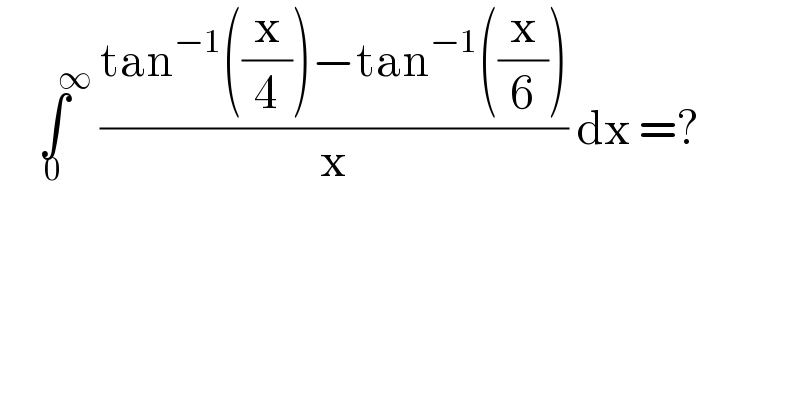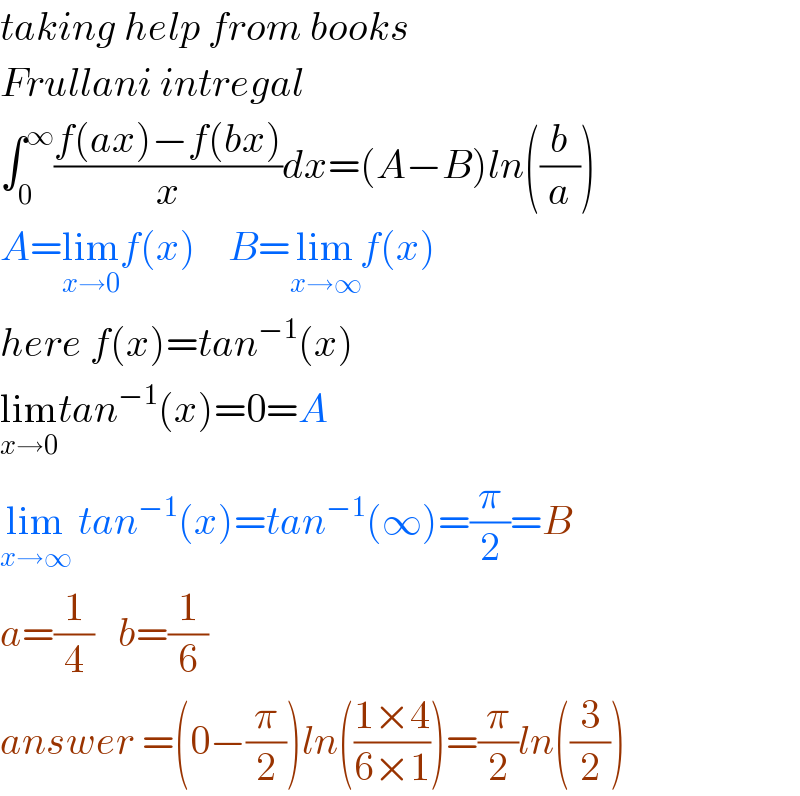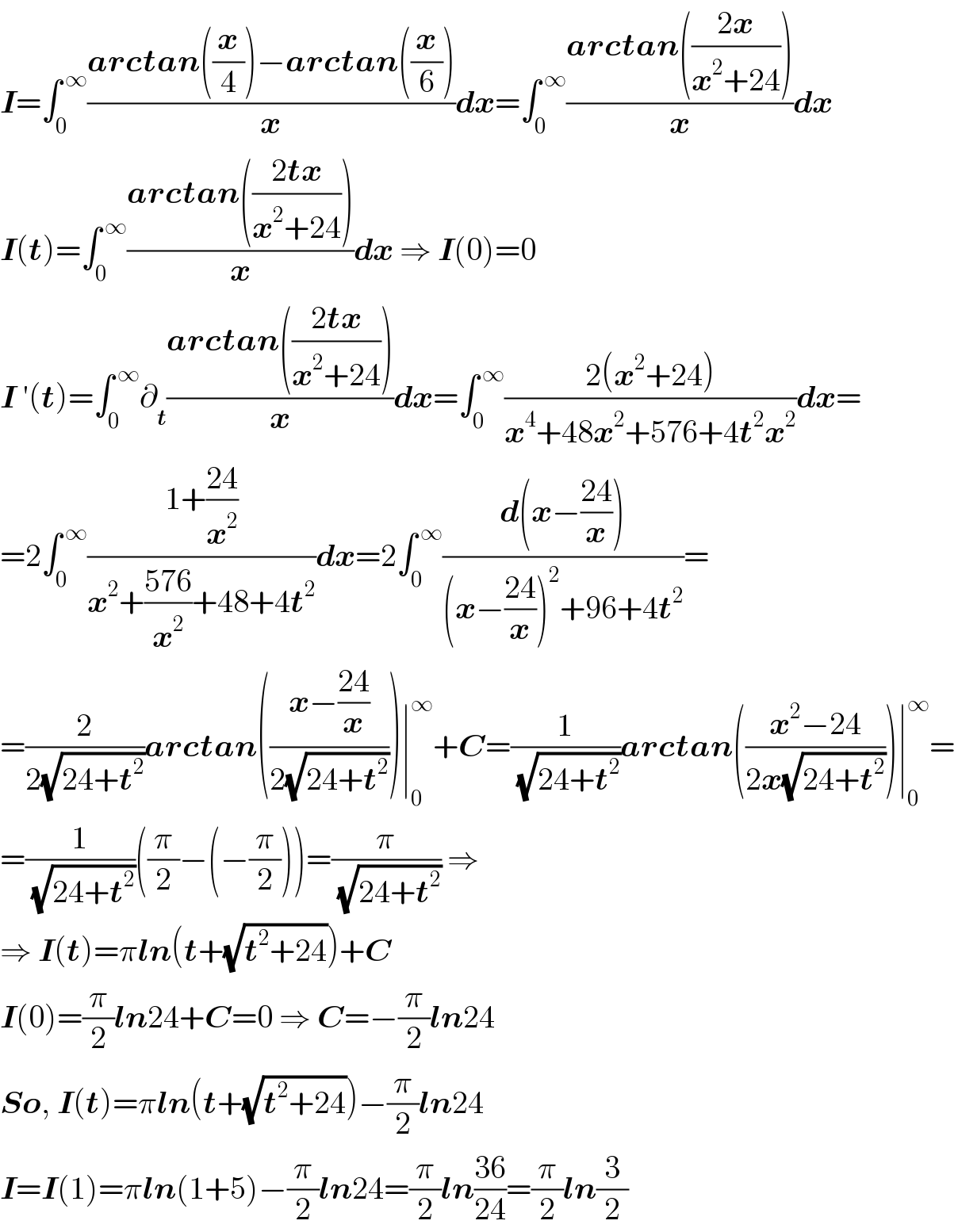
Question and Answers Forum
Question Number 117213 by bobhans last updated on 10/Oct/20

Answered by TANMAY PANACEA last updated on 10/Oct/20

Commented by bobhans last updated on 10/Oct/20

Commented by TANMAY PANACEA last updated on 10/Oct/20

Commented by bemath last updated on 10/Oct/20

Answered by AbduraufKodiriy last updated on 10/Oct/20

Answered by mathmax by abdo last updated on 10/Oct/20
![I =∫_0 ^∞ ((arctan(ax)−arctan(bx))/x)dx =limI(ξ)with I(ξ)=∫_0 ^ξ ((arctan(ax)−arctan(bx))/x)dx=I ∫_0 ^∞ (...)dx =lim_(ξ→+∞) I(ξ) I(ξ) =∫_0 ^ξ ((arctan(ax))/x)dx(→ax =u)−∫_0 ^ξ ((arctan(bx))/x)dx(bx=v) =∫_0 ^(aξ) ((arctanu)/u)du −∫_0 ^(bξ) ((arctanv)/v)dv =∫_(bξ) ^(aξ) ((arctan(u))/u)du ∃ c ∈]bξ ,aξ[ / ∫_(bξ) ^(aξ) ((arctan(u))/u)du =arctanc ∫_(bξ) ^(aξ) (du/u) =arctancln((a/b)) ⇒lim_(ξ→+∞) I(ξ) =(π/2)ln((a/b)) with a=(1/4) and b=(1/6) ⇒(a/b)=(6/4)=(3/2) ⇒∫_0 ^∞ ((arctan((x/4))−arctan((x/6)))/x)dx =(π/2)ln((3/2))](Q117242.png)
